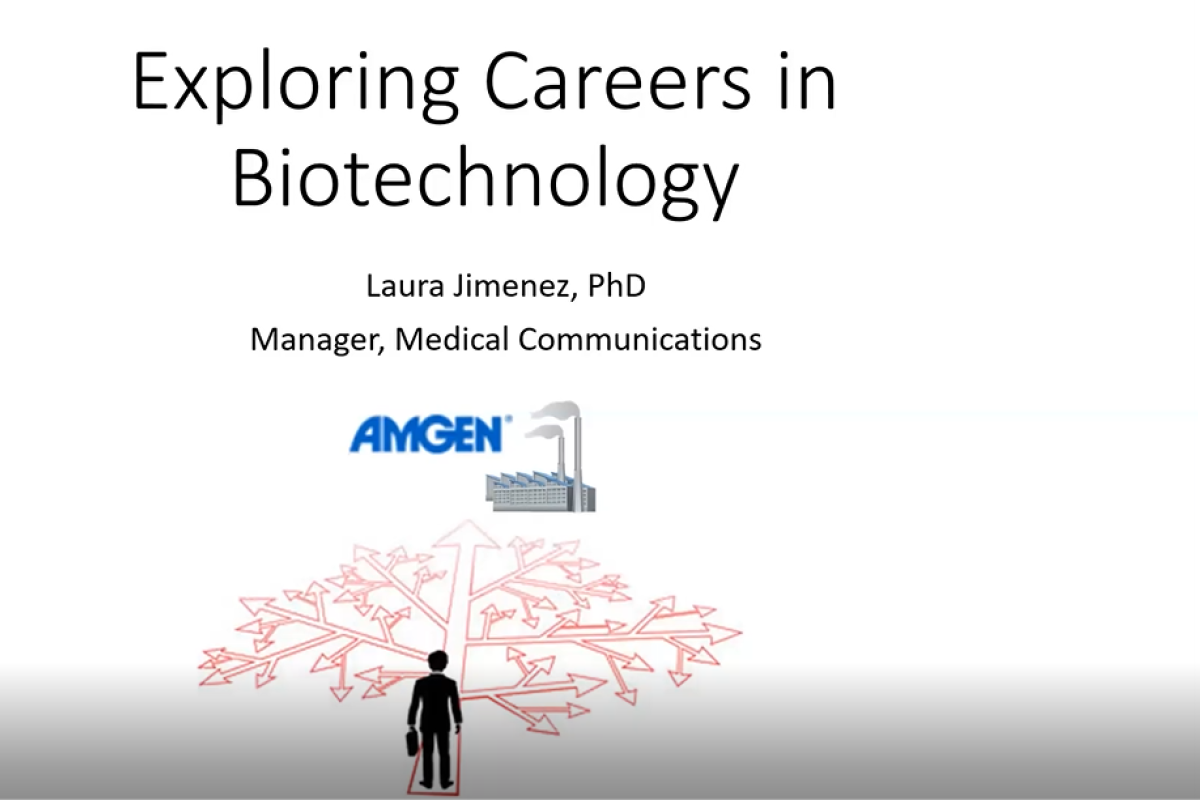When Scott Atkinson left his classroom after the school day in early March, he had no idea that it would be the last time he’d see the gels he had just put in the fridge for an Amgen Biotech Experience (ABE) lab. The gels would kick off the new PCR lab his class was going to explore on genetically modified organisms. His class was also about to segue into a lesson on infectious diseases, having just watched the movie Contagion—which was ironically appropriate given that the school, Greater New Bedford Regional Vocational Technical High School in Massachusetts, would shut down with little notice the next day in response to the COVID-19 outbreak.
In the weeks since then, Atkinson, like so many teachers around the world, has scrambled to reinvent his curriculum for distance learning and to engage students who are facing a host of new daily complications. For biotechnology teachers, the distance poses an extra challenge, as so much of their teaching relies on hand-on activities. With new platforms like LabXchange and some creative problem-solving, ABE teachers are innovating new ways to connect their students to biotechnology.
Challenged Connections
“The biggest challenge with distance learning is student participation,” says Michele Patrick, an ABE teacher at Porterville High School in Southern California. “As with most districts, our students were told the grade they had in their classes prior to school closure would be their final grade,” she says. “However, any work assigned during distance learning can improve their overall grade for the semester. So, anything the students complete during this time is extra credit.”
Only about half of Patrick’s biotech students are participating. “The students who remain engaged do so not to improve their grade—they already have high A's; they are continuing to participate because they want to continue to learn and are interested,” she explains. The reasons for this lack of participation can vary widely, including lack of internet access for many students who want to engage in online learning.

At Julie Pankowicz’s school, Coventry High School in Rhode Island, many of the students have been overwhelmed with new responsibilities.” Some of my students are still working, some are the only ones working in their whole family, some are responsible for younger siblings all day because their parents are working,” she explains. “Some of my students are just so overwhelmed with this whole experience—the isolation, the closing of school and sports, parent unemployment, no prom, no graduation, etc.—that we are seeing a range of behaviors, from not being able to even get out of bed and complete assigned work, to experiencing severe depression, anxiety.”
The school has made available various resources to help. And Pankowicz has been working to create meaningful distance learning experiences that will not feel like a waste of effort to her students. “Virtual learning has been both emotional and challenging, and also a gratifying experience, truly,” she says.
For Atkinson in New Bedford, student participation is also a challenge. “New Bedford has some economically challenged areas for our students, many of whom have no WiFi, phones, etc.,” he says. “Some of my students are totally off the grid, and I have not been able to reach them nor has the school.”
Like Pankowitz’s students, many of Atkinson’s students are also working multiple jobs to help their families. One of the benefits of online instruction, Atkinson says, is that they can do the work when it’s convenient, but the odd hours make it more difficult for direct teacher–student engagement.
Innovative Thinking
Atkinson, like most teachers, had his curriculum for the spring firmly in place—the PCR lab, infectious disease unit, and also one of his favorite lessons on zebrafish development. After schools closed in March, he had the opportunity to briefly go back into his classroom, but he was not able to rescue the gels from the fridge; instead, he had to take care of the four zebrafish tanks he had been grooming for his biotech class.
“Studying the zebrafish is very engaging for my students to observe live under a dissecting microscope,” he says. Over the past few years, he had finely honed a series of activities to study their lifecycle and discuss the pros and cons of using animal models in science and why some companies are moving away.

With the shift to distance learning, he needed to quickly adapt his lessons—through a combination of virtual activities and optional at-home labs. So now, instead of looking at zebrafish directly over their lifespans, his students are learning about various animal models through screencasts. He has also been guiding them through DIY biotech labs like DNA extraction.
The DIY labs are optional, as many students do not have the necessary supplies, like alcohol. “I don’t want to make things too difficult, so we are reviewing concepts from past biology lessons too and focusing on helping students through this difficult time,” Atkinson says. It’s been a steep learning curve for him in using new technology platforms like Google Classroom. He has also been exploring the use of LabXchange for virtual lab practice.
Pankowicz has also used LabXchange to facilitate some of her lessons. “I've posted virtual labs, current articles, and studies in biotech classes,” she says. “And I've had my forensics kiddos do DIY fingerprinting and chromatography labs at home, too!”
Patrick at Porterville High has also embraced new technologies—including Edpuzzle for videos with questions for students to answer, Padlet for discussion, and Flipgrid for students to share thoughts and opinions. “I like to incorporate interactives/simulations whenever possible,” she says. Her curriculum has continued with activities around genome editing and CRISPR, and her class has also participated in a virtual visit with an Amgen volunteer, connecting via Zoom to discuss career pathways.

Throughout these past weeks, all three teachers have been grateful for the support of the ABE program. Several sites have organized virtual meetings for teachers to share their experiences, including in Massachusetts where Atkinson teaches.
“A lot of my students have really risen to the challenge,” Pankowicz says. “The outreach from ABE has also been amazing!”
